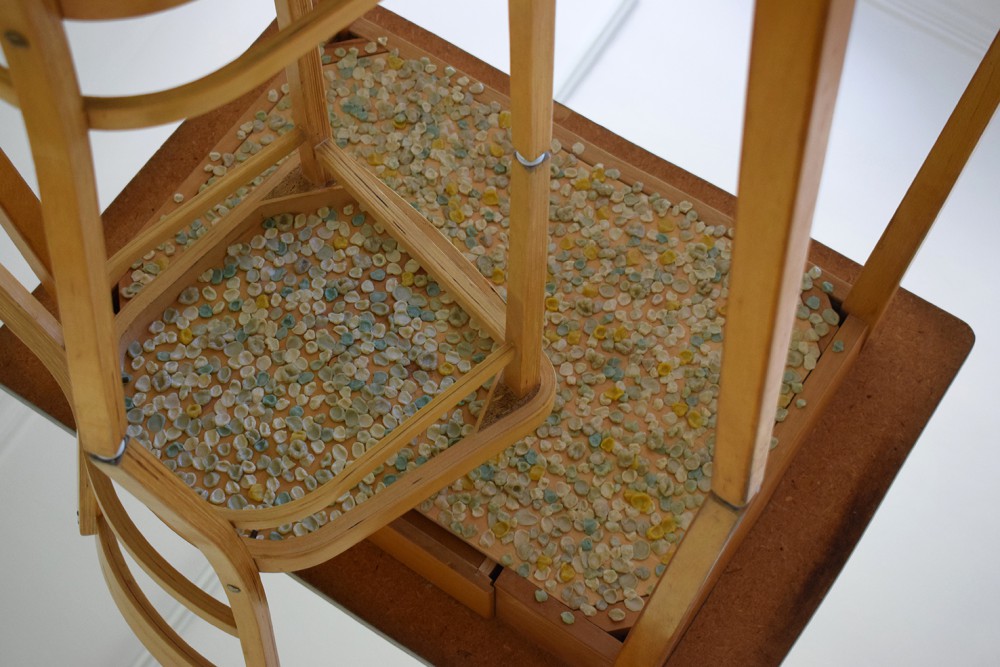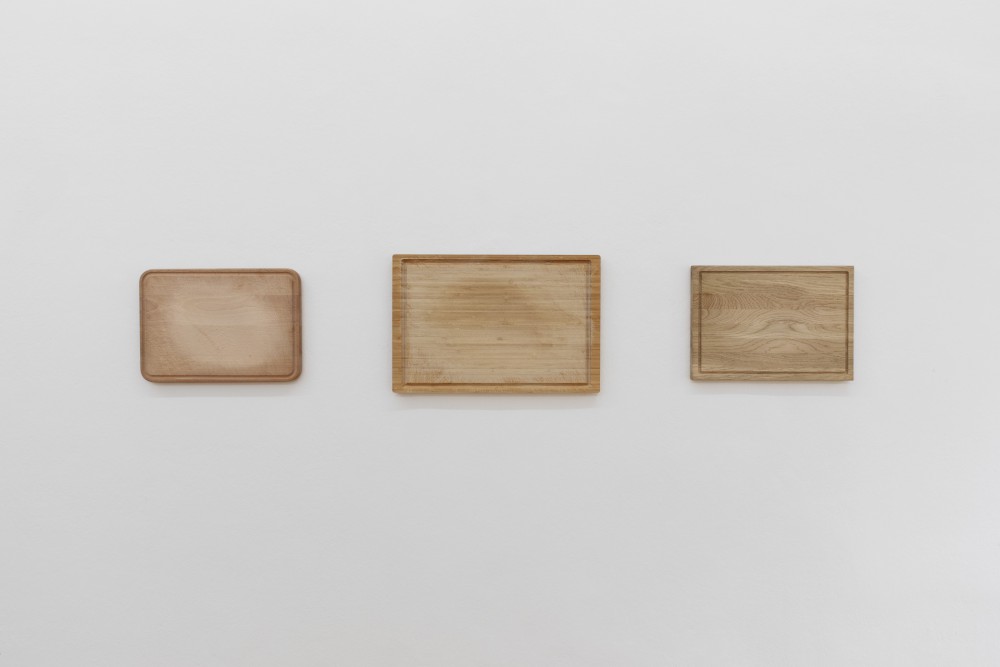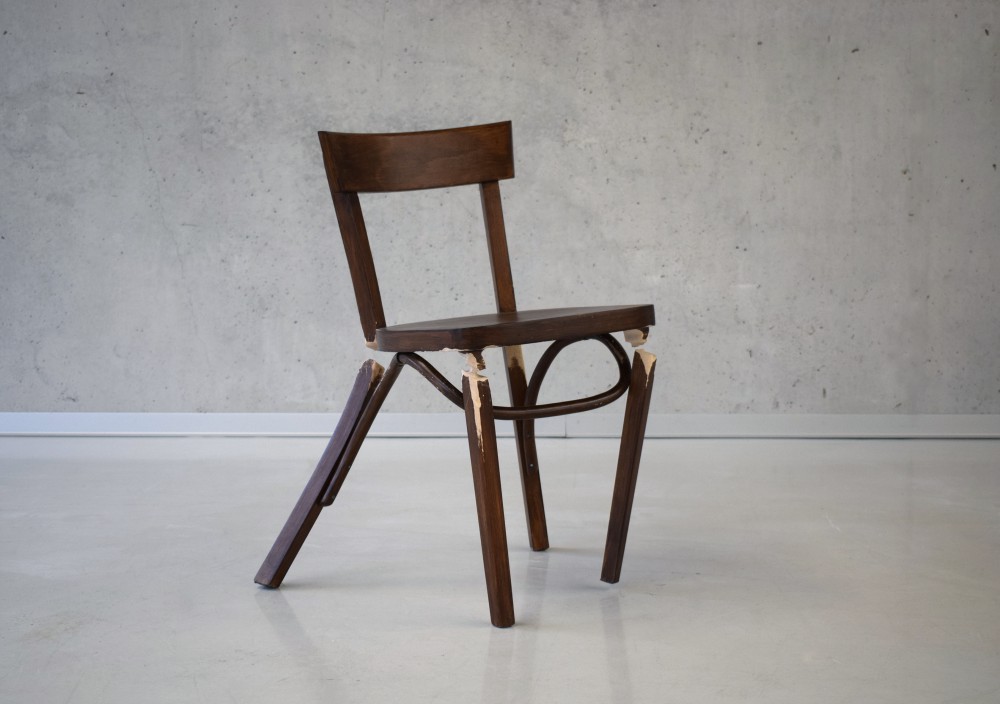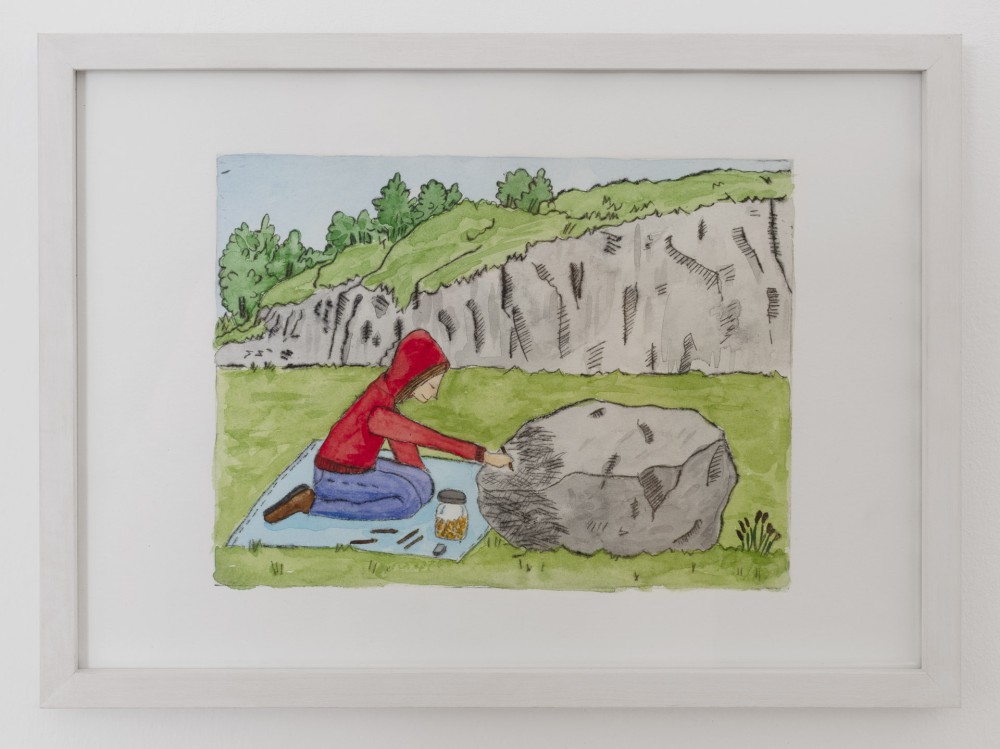The title “auf- und abtragen (cut and add)” could allude to the history of mining in Schwaz. And indeed, this does not lead us astray – but it cannot be connected quite so directly or easily either.
There are several references, such as the color of chewed chewing gum, which comes closest to silver, or the word “abtragen” (to remove), which has burned itself into the vocabulary of this town and still seems to be part of an identity-forming language from long past times.

If we look at it this way, we merely scratch an outer, albeit obvious, surface. But if we consider “auf- und abtragen” (cut and add) as a simple, clearly structured process of action – as a repeated execution whose result merely testifies to the act itself, as a trace or residue – then we come a bit closer to the core of the matter.

If we had to describe Angelika Wischermann’s practice in a few words, the term “researcher of action sequences” would probably fit best. She not only questions the concept of time but also constructs spaces of reflection, within which she performatively investigates the relationship between humans, the body, and the environment. We often find sequences and repetitions of an activity or action that are driven ad absurdum. Everyday objects anticipate their original function. A cutting board is made for cutting. A doormat for wiping feet.

Repetition is grounded in duration rather than in time itself, a quality deeply inscribed in Angelika’s works. Unlike time, duration is flexible: it can be endlessly repeated and continued – or pause, if it wishes. Duration here makes perseverance feel not only like a welcome companion but also as a necessary one. Duration here is not a gift to be requested; it is more the result, a state that can be attained. It encompasses past, present, and future, while still leaving room for everything that lies in between. It manifests in erosion, in removal, and in addition. Every work you see here embodies this duration. It is the removal of a layer – be it footmarks on a doormat or the notches and cut marks on simple cutting boards. It is the act of sitting on a chair while its stability is carefully filed away until it becomes completely alienated from its function. It is the becoming of an almost-cocoon through a three-hour physical twisting process.

Rivers and glaciers can erode rocks and sediments, transforming form itself through a flowing, continuous duration – unpredictably. Angelika Wischermann, on the other hand, initiates transformation processes and places the traces of duration at the center of her work. While the pieces in the entrance area and the rear room are already completed, we find ourselves in the large room amid such a performative repetition that will continue until the end of the exhibition in early August.

A dozen pedestals, with a dozen glasses, of which only one is filled – with the remains of pencil shavings. Georgia Holz has described it in her wonderful text for the exhibition as a poetic gesture – the work “Bleiglanz (Lead Glance)” – it brings together adding and removing equally. As in an archive, the remnants and traces of an action are presented here – meticulously documented, listed, and numbered.

On one wall, a drypoint etching can be seen. It shows the artist painting stones and anticipates the act itself as an act of clarification. What remains are the shavings, and each week a new glass is filled – with new coordinates, which you are welcome to follow to see the painted stones in nature.
Dear Angelika, I would like to thank you for the wonderful collaboration – for showing that the question of “why,” in the small and the slow, can always be an exciting one.
Fotos © Aslan Kudrnofsky and Angelika Wischermann